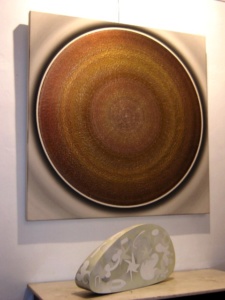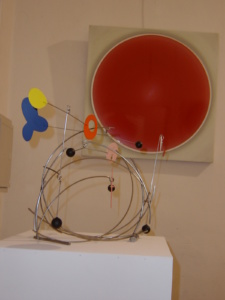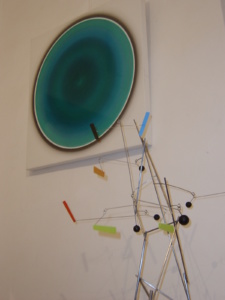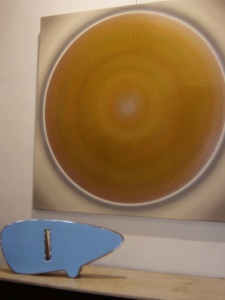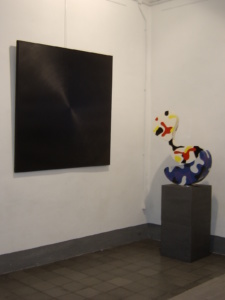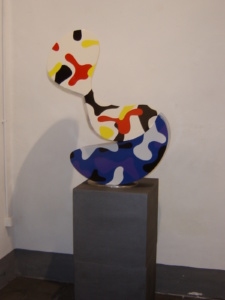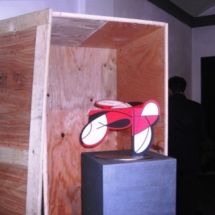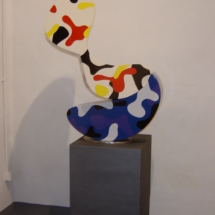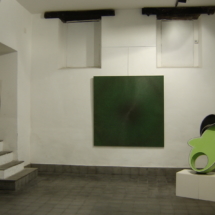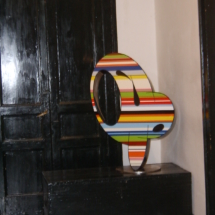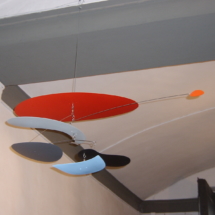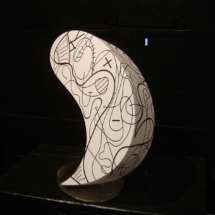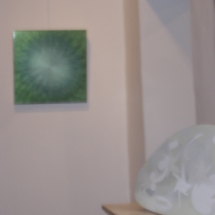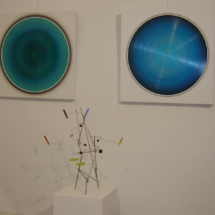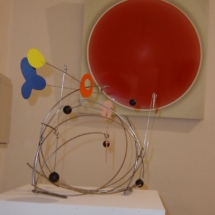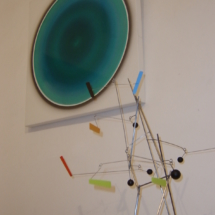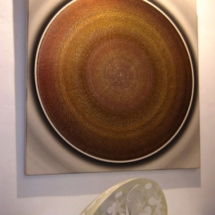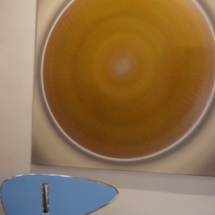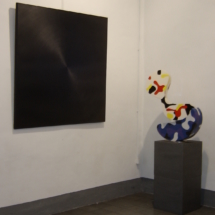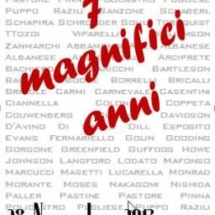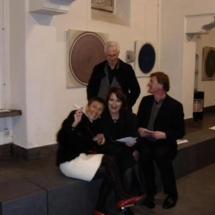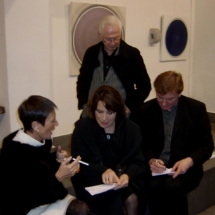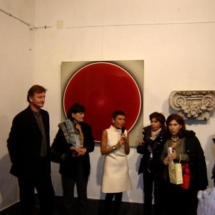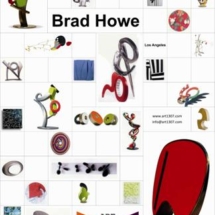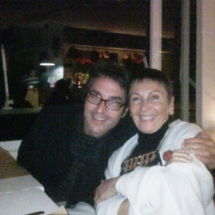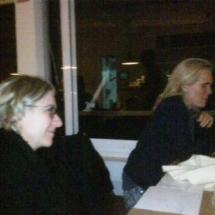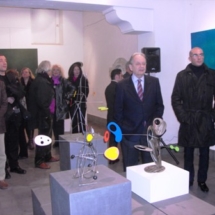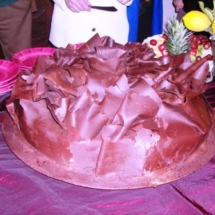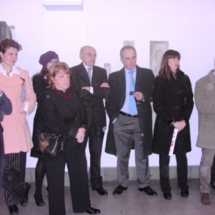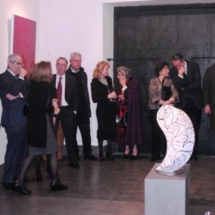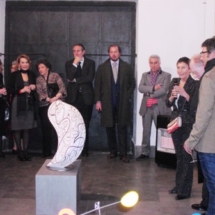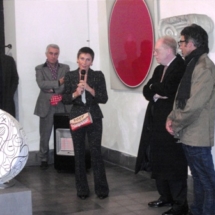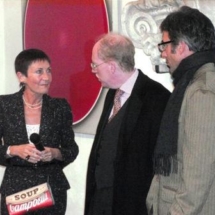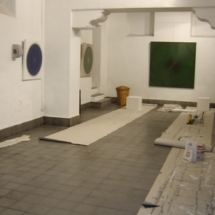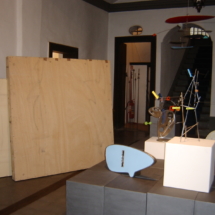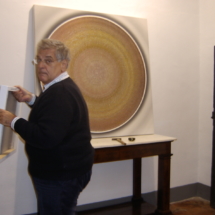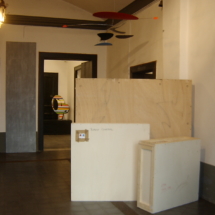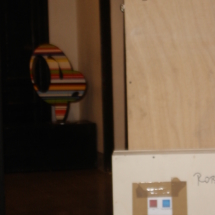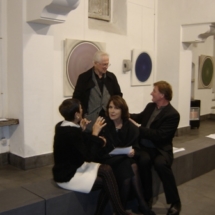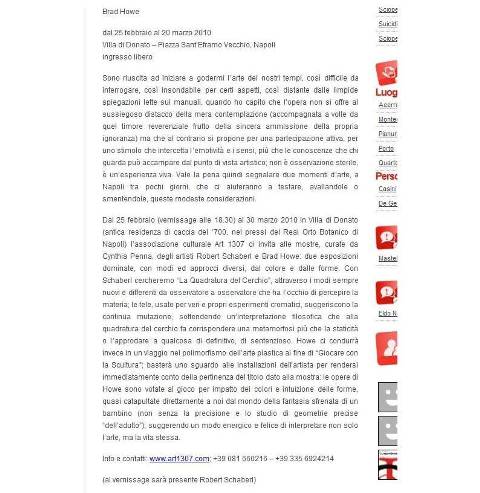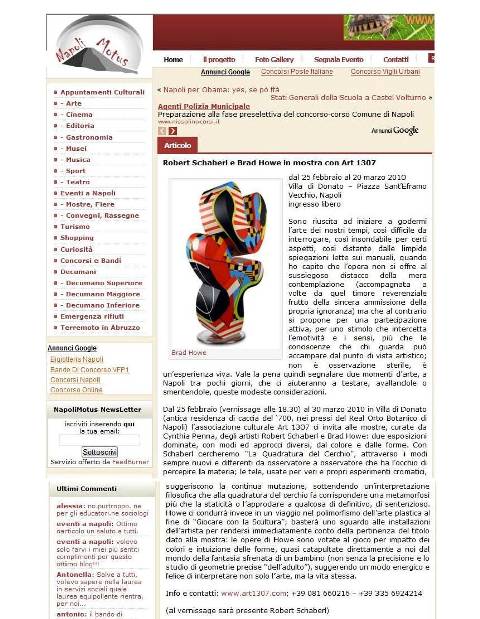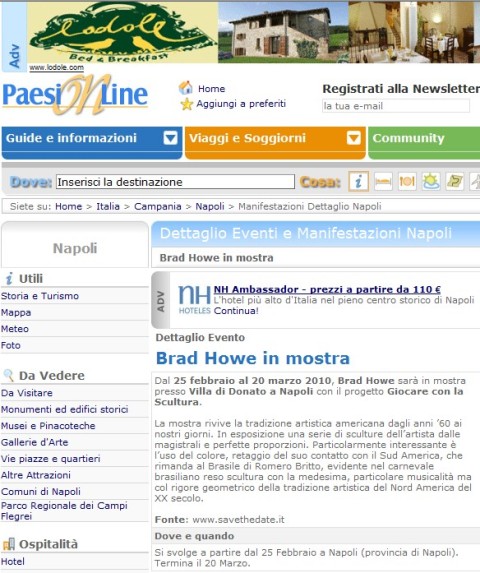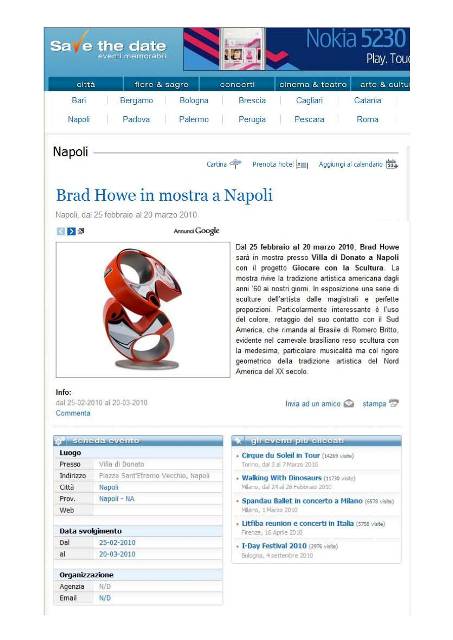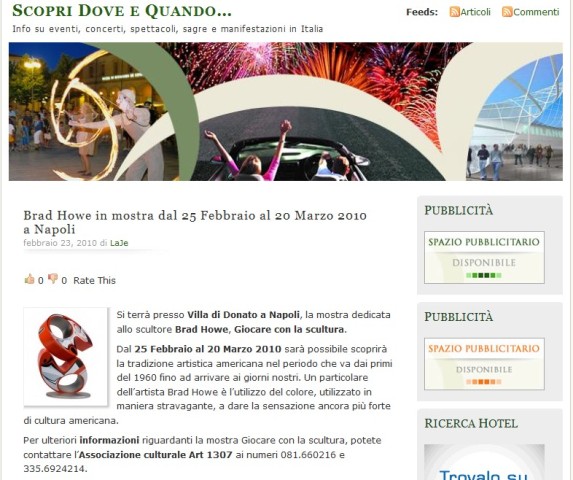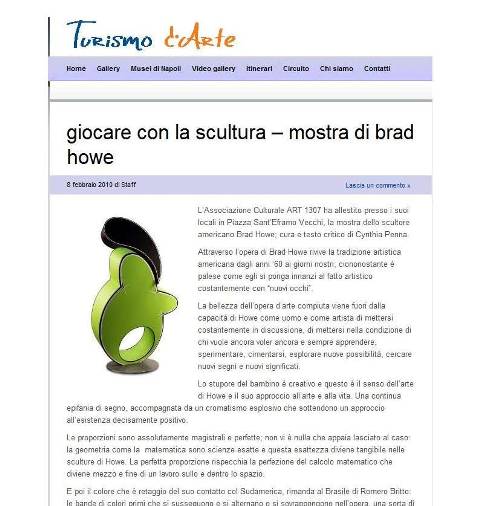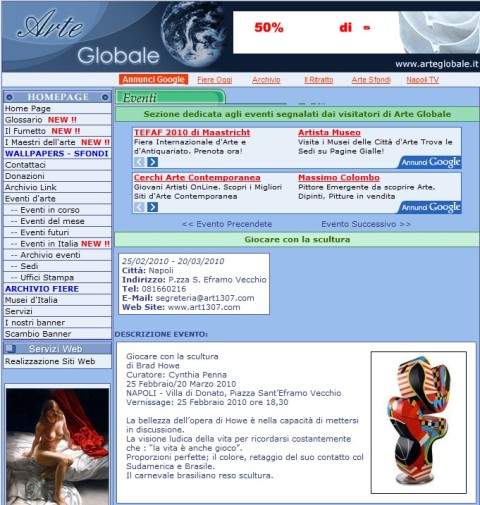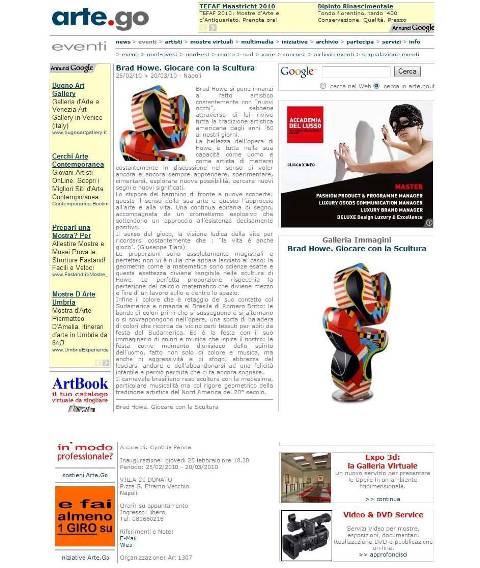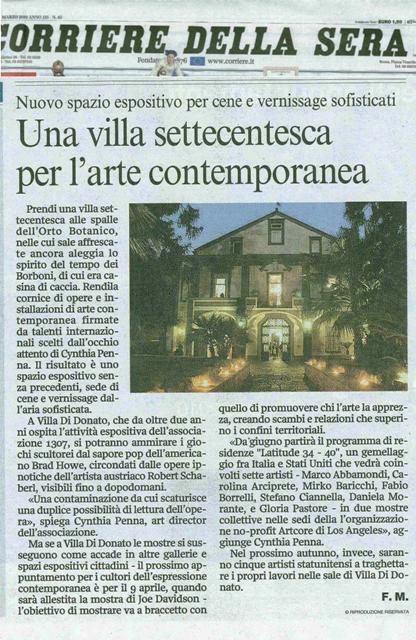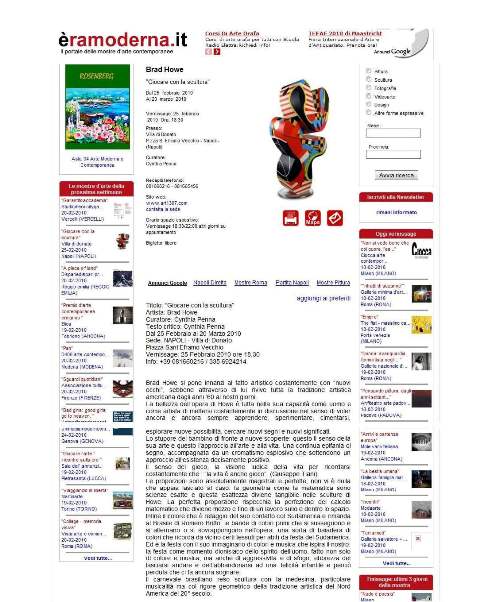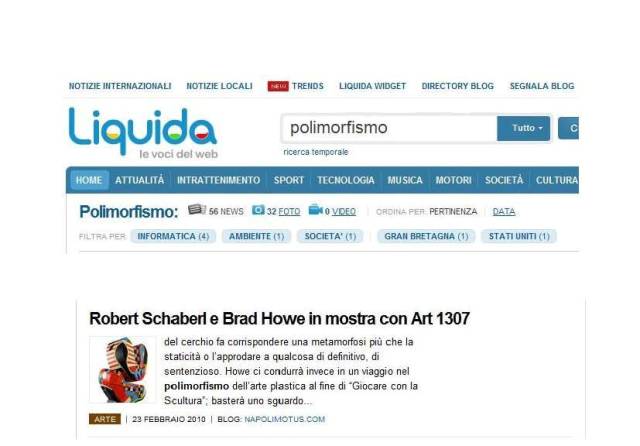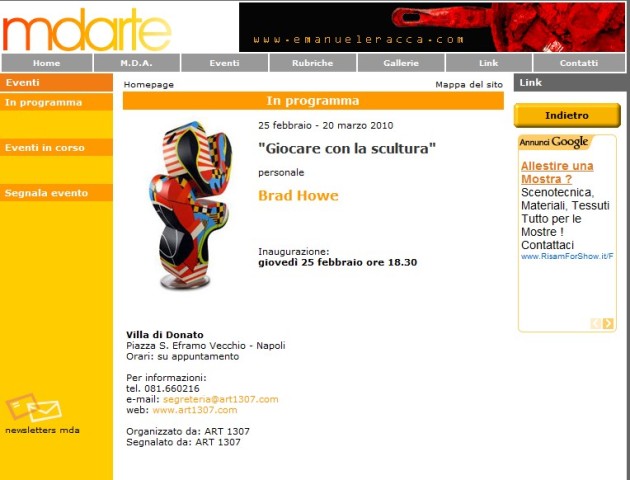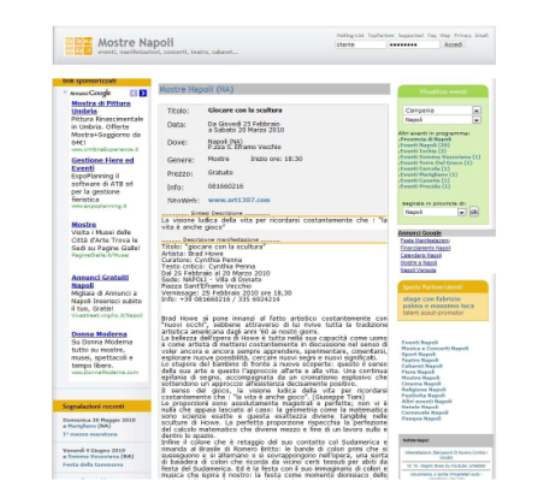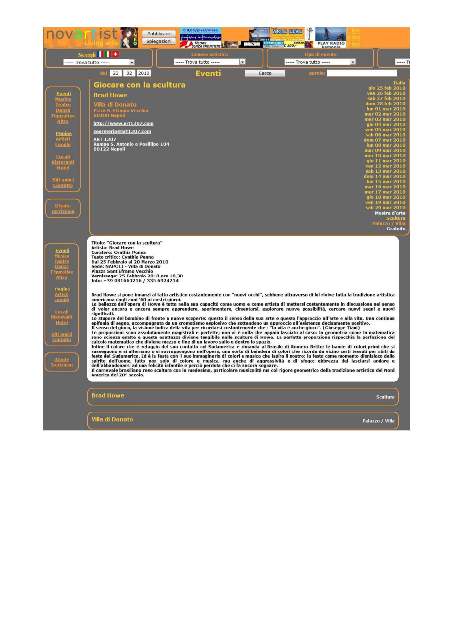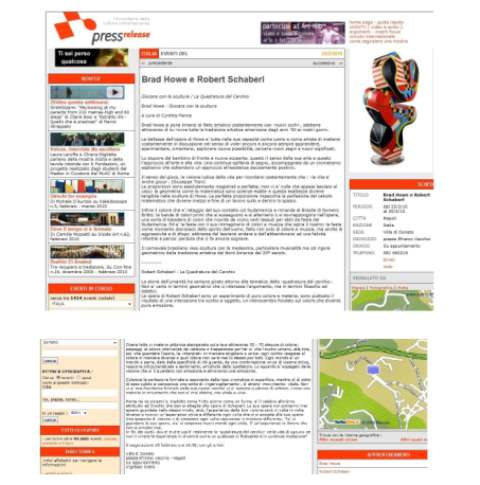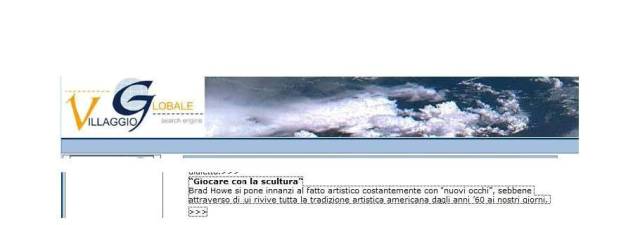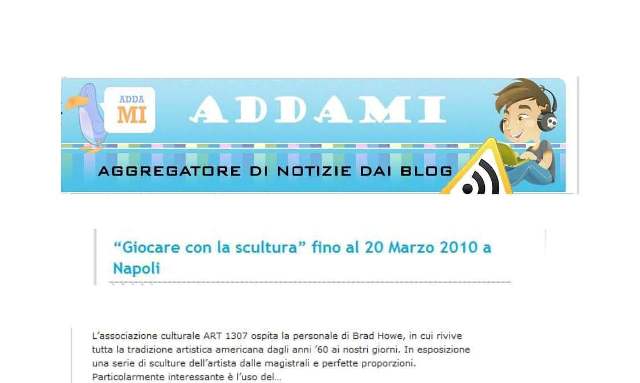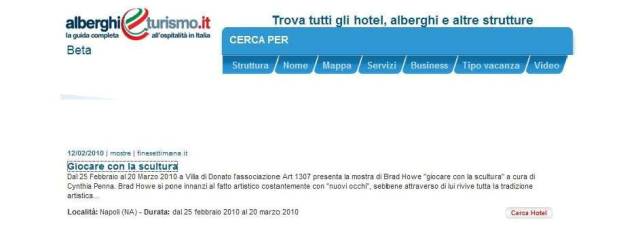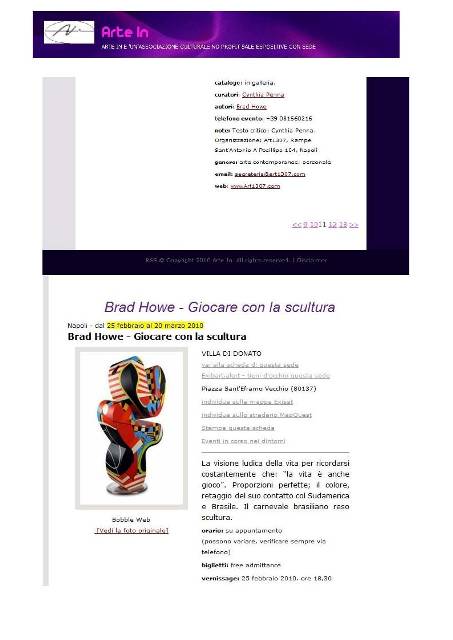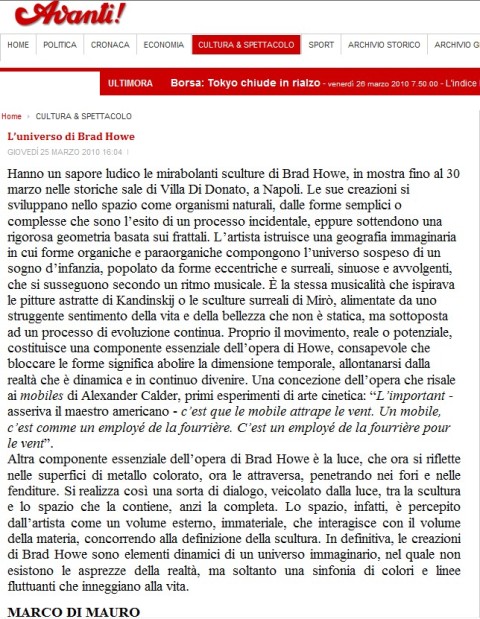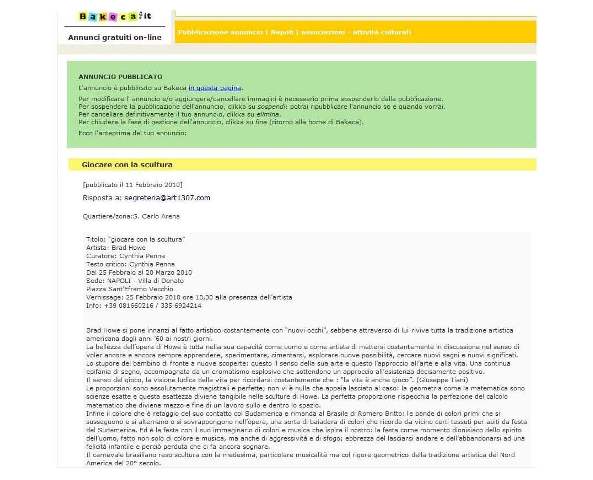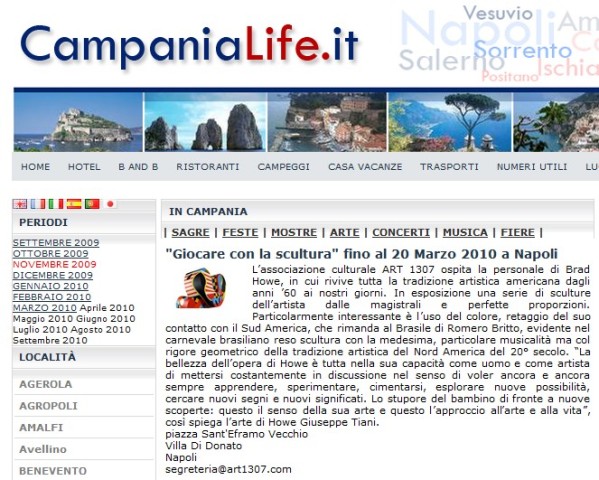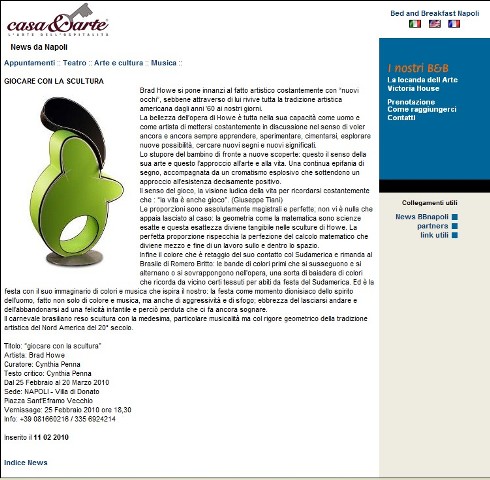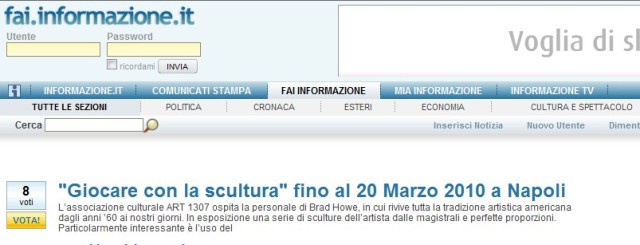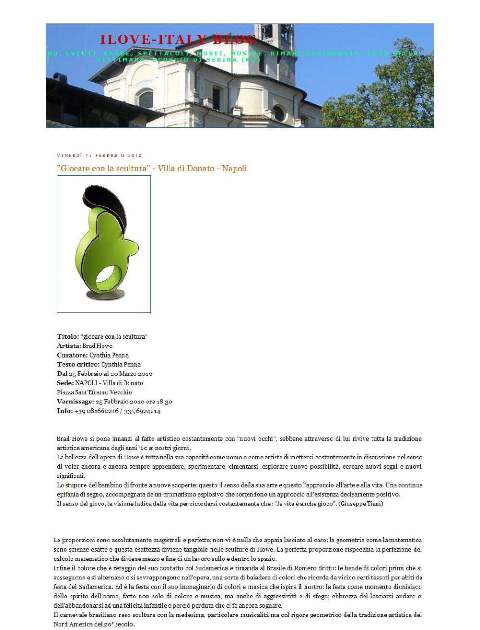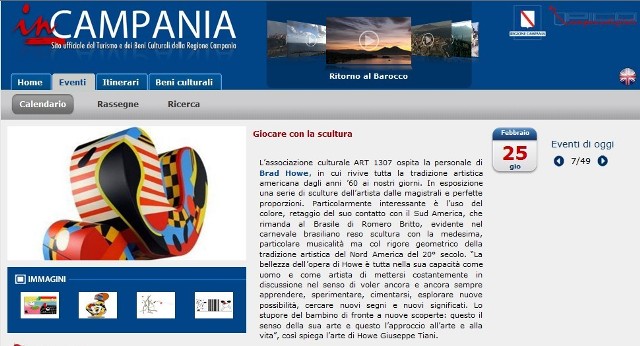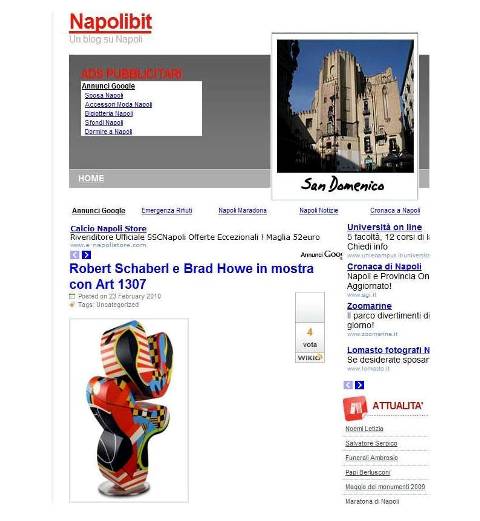Playing with sculpture
Villa Di Donato
From 25/02/2010 to 20/03/2010
Curator: Cynthia Penna
Press: ART1307
PRESS RELEASE
The real voyage of discovery consists not in seeing new landscapes, but in having new eyes
Marcel Proust.
Brad Howe constantly approaches art with “new eyes” even if the entire American tradition from the Sixties until today is reflected by his works. The beauty of Howe’s works lies in his ability, as a man and an artist, to constantly put himself to the test in the sense that he never wants to stop learning, experimenting, venturing on new things, exploring new possibilities, searching for new signs and new meanings. The wonder of a child before new discoveries: this is the meaning of his art and this is his approach to art and to life. A continuous epiphany of signs, accompanied by explosive colours inspired by a decidedly positive approach to life. The sense of play, the playful vision of life, in order to remember that “life is also play”. (Giuseppe Tiani) The sense and ability of “doing, of living, creating art, creating objects, studying, making literature, producing or reproducing, in reality, fragments of thought, expressed through the language of colour and of form: origins of human culture, but all the more universal because they are the cornerstones of human expression. The child initially explores reality through tactile and visual signals of knowledge, by experimenting on and with its body, and finally by making drawings, using signs and colours. This is Howe’s instinctive and at the same time scientific approach to art. But this instinctive and playful approach is based on a profound knowledge of Twentieth-century American art, and this is where we find his sources of inspiration, above all the great master Alexander Calder, the father of suspended works and the mobile “divertissement” which even in its evolved stages unmistakeably remind of the toys hung on the cribs of babies, as their first approach to a reality which is playful, but which at the same time provides an initial contribution of knowledge. And Pop Art has inspired the use of certain materials as aluminium, steel and wood; the discovery of an infantile and playful element which brings to mind Haring, the cartoon element of a Lichtenstein, the colouristic effects of Rosenquist and Wesselmann. One may observe a special liaison with Dennis Hoppenheim and his Architectural Cactus of 2005, works created in the same years as Howe’s experiments, and which were shown at the ACE Gallery in Los Angeles in 2009. Finally, his work features minimalistic tones in the manner of Ellsworth Kelly or Tony Smith and his monoliths from 2006, as in Zuma, Stello, Kimono etc. The American tradition is reflected by a markedly geometric accent of the work and by their installation in space. Howe occupies space, measuring swords with it in a kind of battle where it is never sure who comes out the winner. He imposes himself on the space, occupying it, but then if we observe carefully we see that the space is not dominated by his works, but accompanies them, and that the space succeeds in invading the works: it enters and exits them at will, caressing them or clashing against them as if it were something tangible. The holes, the cuts, the rounded surfaces and the corners all contribute to make the space pivot on the work, and permeate it. The proportions are absolutely masterly and perfect; nothing seems to be left to chance: just as mathematics, geometry is an exact science, and this exactness becomes tangible in Howe’s sculptures. The perfect proportion mirrors the perfection of the mathematical calculations which become a means and at the same time an end of a work on, and within, space. Finally, colour, a heritage of his contact with South America, evokes the Brazil of Romero Britto: the stripes in primary colour which succeed and alternate one another in his work, a kind of bayadére of colours which bring to mind, when observed from close up, certain fabrics used for festive clothes in South America. And festivity, with its images of colour and music, is an important source of inspiration for Howe: the feast as Dionysiac moment, not only made of colour and music but also of aggressiveness and outbursts; the elation of letting oneself go, of yielding to an infantile and thus lost happiness, which still makes us dream. The Brazilian carnival rendered in the form of a sculpture with the same peculiar musicality, but with the geometric rigor of the artistic tradition of North America of the 20th century.

